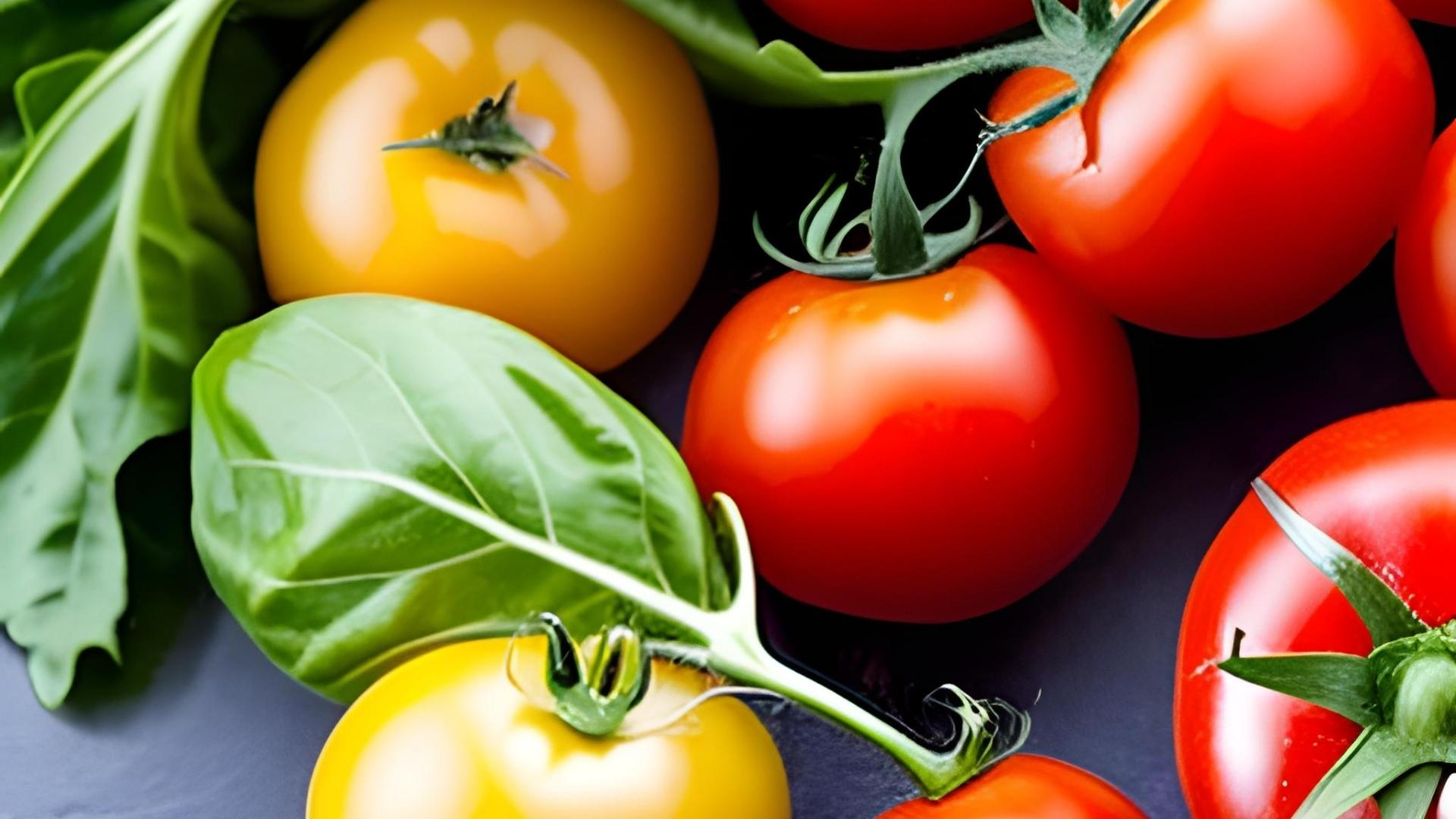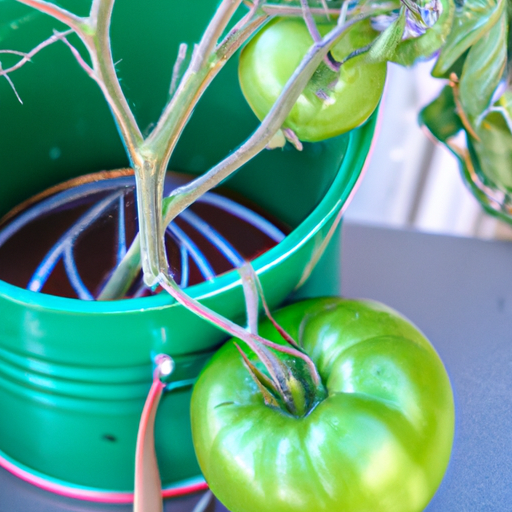When it comes to growing healthy and bountiful tomato plants, selecting the right container size is crucial. The size of the container can impact the plant’s growth, yield, and overall health. Therefore, it is essential to understand the factors that affect the decision and choose the ideal container size for your tomato plants.
What Container Size is Ideal for Tomatoes?
Choosing the right container size is crucial for growing healthy and fruitful tomato plants. The ideal container size for tomatoes depends on various factors, such as the type of tomato plant, the space you have available, and the climate in which you live.
For determinate tomato plants, which are bushier and shorter in height, a 10- to 12-inch (25-30 cm) container is typically sufficient. Indeterminate tomato plants, which grow taller and produce tomatoes over a longer period, require larger containers. A 14- to 16-inch (35-40 cm) container is generally recommended for indeterminate tomato plants.
Additional Factors to Consider
In addition to the type of tomato plant, there are other factors to consider when selecting a container size. For example, if you live in a hot climate, a larger container may be necessary to prevent the soil from drying out too quickly. Similarly, if you plan to grow your tomatoes indoors, a smaller container may be more appropriate to fit the available space.
It is also important to consider the number of tomato plants you plan to grow in each container. While it is possible to grow multiple plants in a large container, it is generally recommended to limit it to one or two plants to prevent overcrowding and ensure each plant receives enough nutrients and water.
Tips for Success
Regardless of the container size you choose, there are a few tips to keep in mind for successful tomato plant growth.
- Firstly, ensure that the container has adequate drainage holes to prevent water from pooling and damaging the roots of the plant.
- Secondly, choose a high-quality potting mix that is formulated specifically for growing vegetables, as this will provide the necessary nutrients for the plant to thrive.
- Finally, be consistent with watering and fertilizing the plants, as tomato plants require regular watering and feeding to produce healthy and abundant fruit.
Is a 3 Gallon Pot Big Enough for Tomatoes?
Many gardeners wonder if a 3 gallon pot is sufficient for growing healthy tomato plants. While it is possible to grow tomatoes in a container this size, there are a few limitations to consider.
The most important factor to keep in mind is the size of the tomato plant. Determinate varieties, which grow to a smaller size and produce all their fruit at once, can be grown in a 3 gallon pot. However, indeterminate varieties, which continue to grow and produce fruit throughout the season, require more space and nutrients than a 3 gallon pot can provide.
Using a pot that is too small for the plant can lead to stunted growth, reduced yield, and nutrient deficiencies. In addition, a small pot will dry out quickly, requiring more frequent watering and increasing the risk of root rot.
If you decide to use a 3 gallon pot for your tomato plant, be sure to choose a determinate variety and provide ample support for the plant as it grows. You may also need to fertilize the plant more frequently and monitor moisture levels carefully to ensure it stays healthy.
Can I Grow Tomatoes in a 5 Gallon Bucket?
Using a 5-gallon bucket as a container for growing tomato plants is a popular choice among gardeners. This method offers several benefits, including affordability, portability, and ease of use. However, there are also some drawbacks to using a 5-gallon bucket, and it’s important to take these into account before making a final decision.
One of the main benefits of a 5-gallon bucket is its affordability. These containers can be found at most hardware stores for a low cost, making it an affordable option for those on a tight budget. Additionally, 5-gallon buckets are lightweight and easy to move around, making them an ideal choice for gardeners with limited space or those who want to be able to move their plants easily.
However, there are also some drawbacks to using a 5-gallon bucket for growing tomato plants. First, these containers may not provide enough space for the roots of larger tomato plants. Additionally, the soil in a small container can dry out quickly, requiring frequent watering to keep the plants healthy.
If you do decide to grow tomato plants in a 5-gallon bucket, there are ways to ensure success. One important factor is selecting the right type of tomato plant. Determinate varieties, which are bushier and smaller in size, tend to do better in containers than indeterminate varieties, which can grow to be quite large. You should also choose a high-quality potting mix and be vigilant about watering the plants regularly.
Do Tomatoes Grow Better in Pots or in the Ground?
When deciding whether to grow tomatoes in pots or in the ground, there are several factors to consider. Both methods come with their own benefits and drawbacks, and the best choice will depend on your individual situation and gardening goals.
Pots
One of the main benefits of growing tomatoes in pots is that it allows for greater control over the growing environment. This is particularly important for gardeners who live in areas with poor soil quality or limited outdoor space. Potted tomato plants can be moved around as needed to maximize sun exposure, and the soil can be customized to suit the specific needs of the plant.
However, there are also some drawbacks to growing tomatoes in pots. One of the most significant is that potted plants require more frequent watering and fertilization than those grown in the ground. This is because the limited soil volume in pots cannot hold moisture or nutrients as effectively as soil in the ground. Additionally, as the plant grows, the roots may become cramped and may need to be transplanted to a larger container.
In the Ground
Growing tomatoes in the ground can be an excellent choice for gardeners who have ample outdoor space and nutrient-rich soil. When planted in the ground, tomato plants have access to a larger volume of soil that can hold water and nutrients more effectively than that in pots. Additionally, the natural ecosystem of the soil contains helpful microbes and fungi that can boost plant growth and health.
However, growing tomatoes in the ground also comes with some drawbacks. For example, gardeners may be limited by the available space and sun exposure in their yard, and the soil may not be ideal for growing tomatoes without amendments. Additionally, outdoor plants are more susceptible to pests and diseases, which can spread quickly and damage the entire crop.
Ultimately, the decision to grow tomatoes in pots or in the ground will depend on several factors, including available space, soil quality, and individual preferences. By considering the benefits and drawbacks of each method, gardeners can make an informed decision that will lead to a successful tomato crop.
How Many Tomatoes Should I Get from 1 Plant?
- Tomatoes are one of the most popular and versatile plants to grow, providing bountiful yields of delicious fruit throughout the growing season. One common question that many gardeners ask is, “How many tomatoes should I expect to get from a single plant?” The answer is not simple, as several factors can affect tomato plant yields.
- The type of tomato plant, growing conditions, and pruning techniques can all impact the number of tomatoes that a plant produces. Indeterminate tomato plants, which continue to grow and produce fruit until the first frost, typically yield more tomatoes than determinate varieties, which produce a set number of fruits and then stop growing.
- The size of the pot can also affect the yield of the plant. Tomato plants grown in smaller pots may not produce as many tomatoes as those grown in larger containers, as they have less room for root growth and nutrient uptake. The ideal container size for tomato plants depends on the variety of tomato you are growing and the growing conditions.
- On average, a single tomato plant can produce between 10 and 15 pounds of fruit over the course of the growing season. However, this can vary widely depending on the factors mentioned above. Some gardeners have reported yields of up to 30 pounds or more per plant, while others may only get a handful of tomatoes.
- It’s important to note that the quality of the tomatoes is just as important as the quantity. Growing healthy, vibrant plants will result in larger, juicier, and more flavorful fruit, even if the total yield is not as high as you had hoped.
Best Containers for Tomatoes
Growing tomato plants in containers can be a great way to enjoy fresh, homegrown tomatoes, even if you have limited outdoor space. However, choosing the right container is crucial for the success of your tomato plants.
Here are some of the best types of containers for growing tomato plants:
1. Fabric Pots (7 Gallons)
Fabric pots are a popular option for growing tomato plants, especially for those who have limited space or want to grow plants on a balcony or patio. These pots are made from a breathable fabric that allows for better root growth and air circulation, leading to healthier plants and bigger yields. The 7-gallon size is perfect for growing one tomato plant.
| Size | Features |
|---|---|
| 7-gallon | Sturdy, reusable, and made of breathable fabric that allows for better root development. |
Fabric pots are a great option for growing tomatoes as they provide excellent drainage, encourage air pruning, and prevent root circling, resulting in healthier and more productive plants.
2. Large Resin Planters
Large resin planters are another great option for growing tomato plants. These pots are lightweight and easy to move, yet durable enough to withstand harsh weather conditions. They come in a variety of sizes and styles, making it easy to find one that fits your space and aesthetic. Look for a pot that is at least 18 inches in diameter for growing a single tomato plant.
| Size | Features |
|---|---|
| 18-inch | Durable, lightweight, and available in a variety of sizes and designs. |
Large resin planters are perfect for growing indeterminate tomato plants that require ample space to grow. They provide great drainage, are easy to move around, and are available in a variety of colors, designs, and sizes to suit your needs.
3. Bloem Saturn Pots
Bloem Saturn pots are another popular choice for growing tomato plants. These pots are made from a high-quality plastic that is both lightweight and durable, and they come in a variety of colors and sizes. Look for a pot that is at least 14 inches in diameter and 12 inches deep for growing a single tomato plant.
When selecting a container for your tomato plants, it’s important to consider the material, size, and drainage. Make sure the container has adequate drainage holes to prevent waterlogging, and choose a size that allows for ample root growth. With the right container, you can enjoy fresh, juicy tomatoes all summer long!
When selecting a container, make sure to choose one that is large enough to accommodate the type of tomato plant you are growing and has adequate drainage for proper soil moisture levels. With the right container, you can grow healthy, productive tomato plants right on your patio or deck.
FAQ: Common Questions about Container Sizes for Tomato Plants
Q: Can I reuse a container from a previous year to grow new tomato plants?
A: Yes, as long as the container is cleaned and sanitized properly before use. To clean the container, scrub it with hot water and soap, then rinse thoroughly. You can also soak it in a mixture of 1 part bleach to 9 parts water for 10 minutes, then rinse thoroughly and let it dry.
Q: Do I need to use a special type of soil in my container for tomato plants?
A: Yes, it is recommended to use a high-quality potting mix that is specifically formulated for vegetables or tomatoes. This type of soil will provide the necessary nutrients and drainage for healthy tomato plant growth.
Q: How often should I water my tomato plants in a container?
A: Tomato plants in containers typically need to be watered more frequently than those in the ground. Depending on the size of the container and the weather conditions, you may need to water your plants every day or every other day. To check if your plants need water, stick your finger down into the soil about an inch – if it feels dry, it’s time to water.
Q: Can I grow more than one tomato plant in a single container?
A: It is not recommended to grow more than one tomato plant in a single container, as each plant needs enough space to grow and develop a strong root system. If you want to grow multiple plants, use separate containers for each one.
Q: How much sun do tomato plants in containers need?
A: Tomato plants need at least 6-8 hours of direct sunlight per day to grow and produce fruit. If you are growing your plants indoors or in a location with limited sunlight, consider using a grow light to supplement the natural light.
Q: Can I move my container-grown tomato plants indoors during cold weather?
A: Yes, you can move your tomato plants indoors during cold weather as long as they still receive enough sunlight or supplemental grow lights. Keep in mind that indoor environments can be drier than outdoor environments, so you may need to water your plants more frequently.





